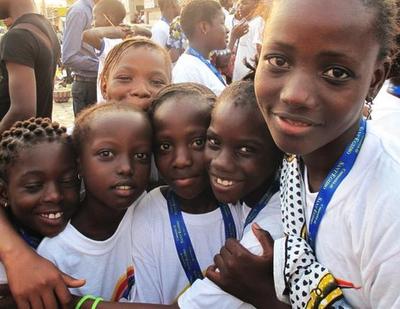The Community of Sant’Egidio has been active in Rwanda for some time. The first initiatives that make up San’Egidio’s presence in Rwanda were launched a few years ago following the 1994 genocide. The first services offered by the Community were those aimed at orphans and homeless children, victims of the genocidal violence and of the subsequent displacement of people.
Today Rwanda has changed. It’s a relatively stable and organized country, whose economy enjoys Chinese-level growth rates. There is less poverty and the wounds of war appear to have healed.. Sant’Egidio as well has planted deeper roots. A beautiful home for the Community has been built in Kigali. On the other hand, in Butare, life in the street is only a memory for those children who, supported by a remote adoption system, live in Sant’Egidio’s shelter home, a berth that provided them with human warmth and opportunities for the future.
However, even in a country which is experiencing change and is coming out of the dead end of underdevelopment, poor people still exist. New socio-economic fault lines have replaced the old divisions based on ethnic identity which have been abolished by law. The rich and the poor live side by side, with merely a hill between them, but are separated by a destiny that seems unavoidable. Just as yesterday the Community endeavored to overcome all ethnic-based antagonism and any residual hatreds, today it is engaged in mending the social fabric to create a bridge in a country that has known far too many chasms..
This is what is happening in downtown Kigali. where the Community’s home is located. In these premises for the past five years the Community has been holding two weekly sessions of the School of Peace – the Thursday session is for the homeless children while the Saturday session is for those who have a home and attend a public school – in order to make available the same destiny of education, coexistence and prospects to all.
The Saturday session of the “School of Peace” - Ishuri ry’Amahoro in kinyarwanda – is particularly aimed at the children of the women who, organized into cooperatives, are paid low salaries by the Municipality to take care of street cleaning. It is towards the hill where the home of the Community is located, the Kiovu cy’Abakire – the rich people’s Kiovu – that the boys and girls from the Kiovu cy’Abakene – the poor people’s Kiovu – walk. It is in this coming together, in this overcoming of one of the new fractures of this country, that one can catch a glimpse of a different and new future, guaranteed to all.
The School of Peace thus becomes a precious bridge between two neighborhoods which, though separated by a mere hundred meters, run the risk of becoming distinct or even opposing worlds. In the end, it represents the possibility of there being only one Kiovu, the Kiovu of the Rwandans.






